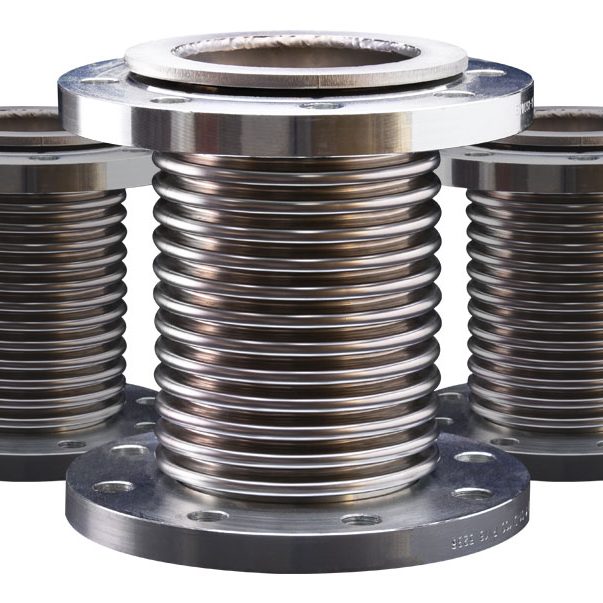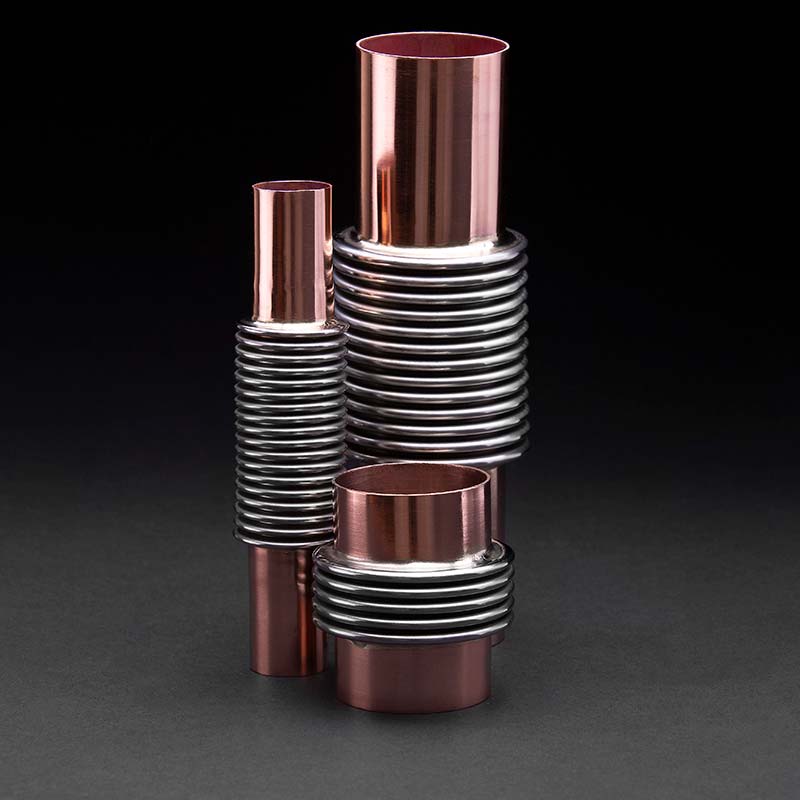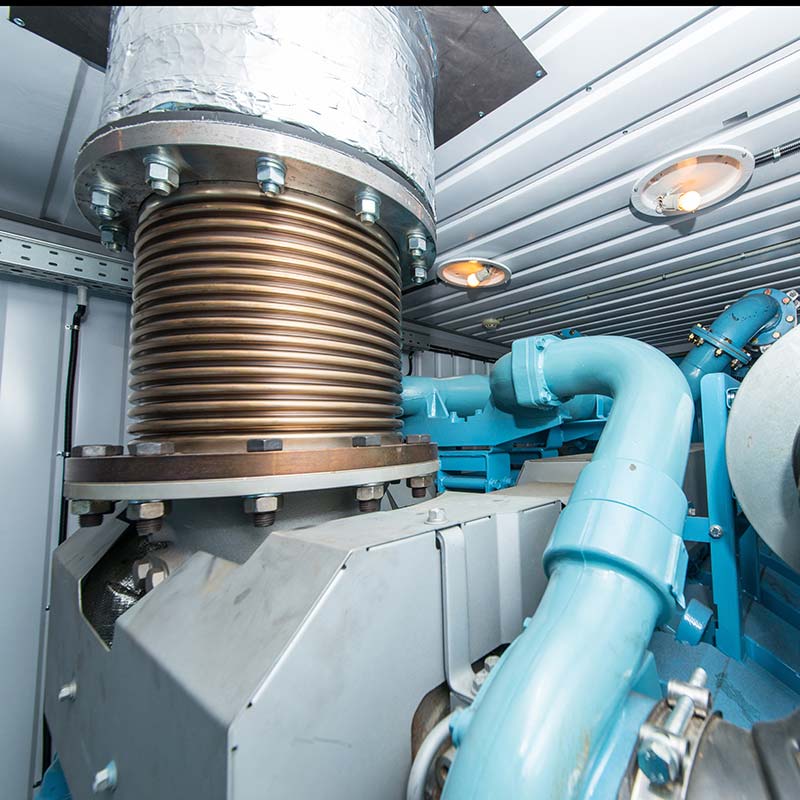
Stainless steel lateral bellows, lateral expansion joints or lateral compensators are specialised components used in piping systems to accommodate lateral or transverse movement perpendicular to the pipe’s axis where large movements must be taken up. They are designed to absorb and compensate for side-to-side movement caused by thermal expansion, mechanical vibration, or dynamic forces while maintaining the system’s structural integrity.
Lateral bellows typically consist of one or more convolution sets formed from thin-walled stainless steel tubing, similar to axial bellows. However, the critical difference is in the arrangement of the convolutions, which facilitates more significant lateral movement. The convolutions allow the bellows to compress and extend sideways, providing flexibility to absorb lateral displacement.
Similar to axial bellows, stainless steel is the primary material used in the construction of lateral bellows due to its excellent corrosion resistance, durability, and temperature resistance. The specific grade of stainless steel chosen depends on factors such as the operating environment, temperature range, and compatibility with the conveyed fluid.
Several factors are considered in the design of stainless steel lateral bellows to ensure optimal performance and reliability:
In summary, stainless steel lateral bellows are crucial in accommodating lateral movement in piping systems, providing flexibility, reliability, and longevity in diverse industrial applications.

